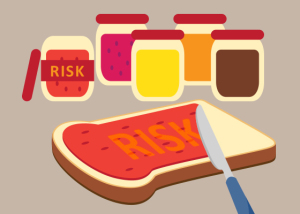 Hedging is a financial services industry strategy which involves lowering your risk (but ultimately also your potentially return) by spreading your bets over a number of possible outcomes. (N.B. This is not to be confused with spread betting which definitely does not reduce your risk!)
Hedging is a financial services industry strategy which involves lowering your risk (but ultimately also your potentially return) by spreading your bets over a number of possible outcomes. (N.B. This is not to be confused with spread betting which definitely does not reduce your risk!)
Dutching is the most famous Hedging method and we will cover this and others below.
The Dutching System of Hedging Your Bets
Dutching is a form of Hedging; specifically it involves calculating the level of bet to stake on each selection so you receive back the same no what which of your horses wins. There are plenty of Dutching calculators available for free on the web and I will review and post the best one here in due course. However, it’s better to understand how the Dutching betting system works so you can tweak it to your own requirements and understand when to use it and when not to.
Dutching works when the punter can successfully reduce the runners in a race down to a handful of potential winners. Of course if, as does happen, there is a shock result and the winner is not one of these horses then the punter loses his entire outlay. It is up to the skill of the gambler to use this horse racing system wisely to successfully improve profits over time.
Lets say, for example, that we were going to place a dutch bet on 3 horses in a particular race.
The respective odds of these horses are:
Horse A = 5-2 (or 3.5 as a decimal assuming return of unit stake)
Horse B = 7-2 (or 4.5)
Horse C = 3-1 (or 4)
First you convert the odds to a percentage by dividing into 100:
Horse A = 28.57% (100 divided by 3.5 equals 28.57)
Horse B = 22.22% (100 divided by 4.5 equals 22.22)
Horse C = 25% (100 divided by 4.00 equals 25)
Now total the percentages together:
28.57 + 22.22 + 25 = 75.79%
So there should be (all things being equal) a 75.79% chance of one of our three runners winning the race.
Now to find out what to bet on each runner you divide the horses’ individual percentage by the overall percentage figure then multiply by your total stake (£20 in this example).
Horse A 28.57 / 75.79 x 20 = £7.54
Horse B = 22.22 / 75.79 x 20 = £5.86
Horse C = 25 / 75.79 x 20 = £6.59
Total stake 7.54 + 5.86 + 6.59 = 20
Therefore if either horse A,B or C win you will win £26.39 back. A profit of £6.39 or 31.9%.
Of course if another horse wins you lose £20! The trick with turning Dutching into a profitable horse racing system is to spot races when there are a group of front-runners one of whom is almost certain to win. Then do your Dutching calculation and make sure the returns stack up to show a profit. For example if our horses’ odds are:
Horse A = 11-10
Horse B = 2-1
Horse C = 3-1
Then our potential return from a £20 bet is £18.87. Clearly not a profitable bet! The indicator here is that the total of the percentages in this case is 105%. It needs to be below 100% to make the Dutching system workable. Dutching works better on bigger races with 10 runners or more and where the favourite is about 3-1 or more.